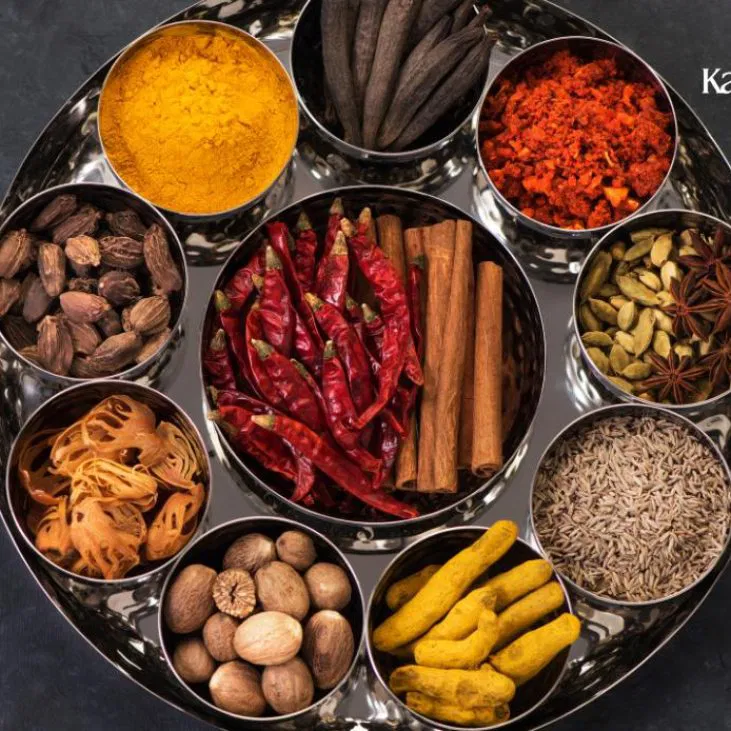Free Delivery, Anywhere In The UK Mainland!
The Secret to Perfect Curry: Spice Blending 101

There’s something magical about the aroma of a curry simmering on the stove — the fragrant spices, the vibrant colors, and the way the flavors seem to hug you from the inside out. But here’s the truth: the difference between a good curry and an unforgettable one often comes down to how you blend your spices. Spice blending is an art form, passed down through generations in kitchens around the world, and once you learn the fundamentals, you’ll never look at curry the same way again.
A perfect curry is rarely made by tossing in a handful of random spices. Each spice plays a specific role — some provide warmth, some bring heat, others add depth or brightness. The key is knowing how to combine them in the right proportions and when to add them to the cooking process. That’s why mastering spice blending isn’t just about taste; it’s about creating balance, harmony, and complexity in every bite.
The Foundation: Whole vs. Ground Spices
The first step in curry perfection is deciding whether to use whole spices, ground spices, or a mix of both. Whole spices like cumin seeds, cardamom pods, or cloves release deep, earthy aromas when toasted in oil at the beginning of cooking. Ground spices, such as turmeric or chili powder, dissolve into the sauce, coloring and flavoring the curry evenly. Many cooks start with a tempering stage — heating whole spices in oil until fragrant — before layering in ground spices to build complexity.
Balancing the Flavor Profile
Curry isn’t one flavor; it’s a balance of several taste elements:
- Warmth: Cumin, coriander, turmeric
- Heat: Chili powder, black pepper, mustard seeds
- Sweetness: Cinnamon, fennel seeds, fenugreek leaves
- Aromatic lift: Cardamom, cloves, nutmeg
- Tanginess: Amchur (dried mango powder), tamarind
The best curries layer these flavors, so no single note dominates. Even a fiery vindaloo will usually have some sweetness from caramelized onions or cinnamon to balance the heat.
Timing is Everything
When you add spices matters as much as which ones you choose. Toasting whole spices at the beginning deepens their flavor, but adding delicate spices too early can make them bitter. Aromatic spices like garam masala or fresh herbs are best added towards the end of cooking so their fragrance stays intact. If your curry is tasting flat, a sprinkle of garam masala right before serving can bring it to life.
The Role of Fat in Spice Release
Spices release their essential oils — and therefore their full flavor — in fat. That’s why traditional curries often start with oil, ghee, or coconut milk. Adding your spices directly to hot oil before any liquid helps them bloom, intensifying the flavor. Without this step, you risk a curry that’s muted or “dusty” tasting.
Creating Your Own Blend
Store-bought curry powders are convenient, but making your own blend allows you to tailor the flavor exactly to your liking. Here’s a simple starting point for a homemade blend:
- 2 tbsp ground coriander
- 1 tbsp ground cumin
- 1 tbsp turmeric
- 1 tsp chili powder (adjust for heat preference)
- 1 tsp ground ginger
- ½ tsp cinnamon
Toast the whole spices (if using seeds) first, then grind them for the freshest taste. You can store your blend in an airtight container for up to a month before the flavor starts to fade.
Regional Differences in Spice Blends
Not all curries taste the same, and that’s the beauty of them.
- Indian curries often use garam masala, fenugreek, and mustard seeds.
- Thai curries rely on lemongrass, galangal, and fresh chili pastes.
- Japanese curry is milder and sweeter, with hints of apple and honey.
Exploring different regional blends will help you understand how cultural preferences shape spice combinations.
Common Mistakes to Avoid
- Adding all spices at once — this flattens the flavor layers.
- Skipping the toasting step — unbloomed spices taste raw.
- Overcooking delicate spices — they lose their aroma quickly.
- Using stale spices — old spices lack potency, no matter the recipe.
Experiment and Trust Your Palate
There’s no single “right” curry recipe — the perfect blend is the one that tastes perfect to you. Start with tried-and-true combinations, then adjust amounts based on your preferences. Keep notes on what you change so you can recreate your favorites.
